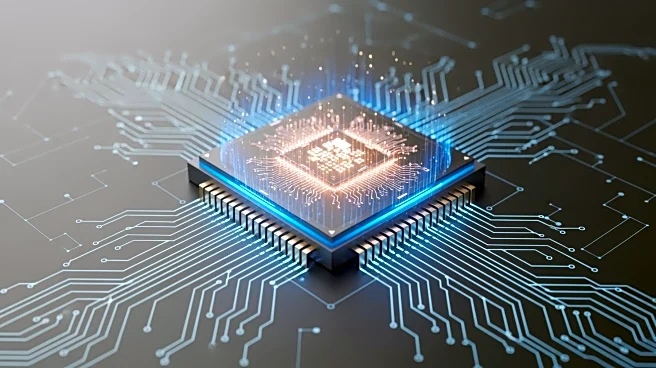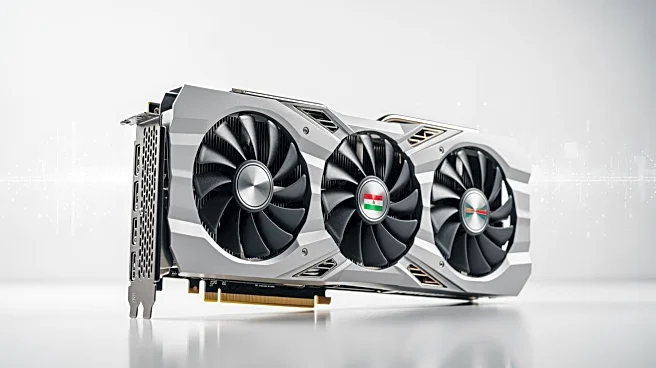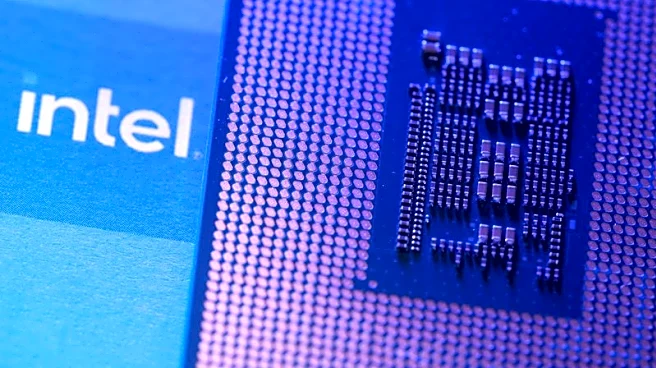What's Happening?
A recent leak from Moore's Law is Dead has unveiled details about AMD's upcoming Zen 7 architecture, highlighting substantial performance improvements and a significant increase in 3D V-cache. The Zen 7 architecture is expected to utilize TSMC's A14 node,
slated for high-volume manufacturing in 2028. The architecture will feature two chiplets under the Grimlock moniker: Silverton and Silverking. Silverton will offer 16 Zen 7 cores, 32 MB L2 cache, 64 MB L3 cache, and support for a 160 MB 3D V-cache tile per CCD, while Silverking will be a scaled-down version with 8 cores and reduced cache sizes. Zen 7 is anticipated to provide a 16-20% improvement in non-gaming workloads over Zen 6, with single-threaded performance gains of up to 20% and multi-core improvements of 67%. The architecture will also be integrated into laptops, with configurations like Grimlock Point and Grimlock Halo mixing Zen 7 and Zen 7c cores, promising notable increases in performance-per-watt.
Why It's Important?
The advancements in AMD's Zen 7 architecture are poised to significantly impact the computing industry, particularly in consumer desktops, laptops, and servers. The increased performance and efficiency could enhance the capabilities of high-end computing applications, benefiting industries reliant on intensive processing tasks such as gaming, data analysis, and artificial intelligence. The substantial increase in 3D V-cache could lead to improved multitasking and faster processing speeds, offering competitive advantages over other chip manufacturers. This development may also influence market dynamics, potentially driving innovation and competition in the semiconductor industry, which is crucial for technological progress and economic growth.
What's Next?
As AMD continues to develop its Zen 7 architecture, the industry can expect further announcements regarding specific product releases and performance benchmarks. The anticipated launch of Zen 7 desktop parts and laptop configurations could lead to increased adoption by OEMs and consumers seeking enhanced computing power. Stakeholders, including technology companies and consumers, will likely monitor AMD's progress closely, as the architecture's performance improvements could influence purchasing decisions and strategic planning. Additionally, AMD's advancements may prompt competitors to accelerate their own development efforts to maintain market share.
Beyond the Headlines
The leak of AMD's Zen 7 architecture not only highlights technical advancements but also underscores the ongoing evolution of semiconductor technology. The shift to TSMC's A14 node represents a significant step in manufacturing innovation, potentially setting new standards for efficiency and performance. This development may also have broader implications for energy consumption and sustainability in computing, as increased performance-per-watt could lead to more environmentally friendly technology solutions. Furthermore, the integration of diverse core types in laptop configurations reflects a growing trend towards versatile and adaptive computing solutions, catering to a wide range of user needs.














